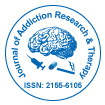Nuestro grupo organiza más de 3000 Series de conferencias Eventos cada año en EE. UU., Europa y América. Asia con el apoyo de 1.000 sociedades científicas más y publica más de 700 Acceso abierto Revistas que contienen más de 50.000 personalidades eminentes, científicos de renombre como miembros del consejo editorial.
Revistas de acceso abierto que ganan más lectores y citas
700 revistas y 15 000 000 de lectores Cada revista obtiene más de 25 000 lectores
Indexado en
- Índice de fuentes CAS (CASSI)
- Índice Copérnico
- Google Académico
- sherpa romeo
- Abrir puerta J
- Revista GenámicaBuscar
- Claves Académicas
- TOC de revistas
- SeguridadIluminado
- Infraestructura Nacional del Conocimiento de China (CNKI)
- Biblioteca de revistas electrónicas
- Búsqueda de referencia
- Universidad Hamdard
- EBSCO AZ
- OCLC-WorldCat
- Catálogo en línea SWB
- Biblioteca Virtual de Biología (vifabio)
- publones
- Fundación de Ginebra para la educación y la investigación médicas
- Pub Europeo
- ICMJE
Enlaces útiles
Revistas de acceso abierto
Comparte esta página
Abstracto
Expanding access to medications for opioid use disorder in primary care: An examination of common implementation strategies
Lauren Caton, Hanyang Shen, Mehret T Assefa, Tammy Fisher, Mark P McGovern
Objective: Buprenorphine, a medication for opioid use disorder, remains vastly underutilized despite its proven efficacy. This study sought to evaluate which strategies, within a system that employed a variety of concurrent strategies, effectively increased access to buprenorphine.
Methods: Over the course of 18 months, 25 federally qualified health centers were invited to participate in four commonly used implementation strategies. This study examines the impact of clinic attendance at strategy events on change in numbers of patients prescribed buprenorphine and numbers of buprenorphine-waivered providers by clinic.
Results: There was a nearly three-fold increase (2.84) in patients on buprenorphine and two-fold increase (1.90) in number of buprenorphine-waivered prescribers during the project period. Clinics attending at least half of the available didactic webinars and Project ECHO sessions were significantly more likely to increase both patients and providers than clinics attending fewer events.
Conclusions: In order to make informed decisions about how best to increase access to medications for opioid use disorder, systems and organizations need data on which implementation strategy options are most effective.
Revistas por tema
- Agricultura y acuicultura
- Alimentación y Nutrición
- Bioinformática y biología de sistemas
- Bioquímica
- Ciencia de los Materiales
- Ciencia general
- Ciencias Ambientales
- Ciencias Clínicas
- Ciencias farmacéuticas
- Ciencias Médicas
- Ciencias Sociales y Políticas
- Ciencias Veterinarias
- Enfermería y atención sanitaria
- Física
- Genética y biología molecular
- Geología y Ciencias de la Tierra
- Ingeniería
- Inmunología y Microbiología
- Química
Revistas clínicas y médicas
- Anestesiología
- Biología Molecular
- Cardiología
- Cirugía
- Cuidado de la salud
- Dermatología
- Diabetes y Endocrinología
- Enfermedades infecciosas
- Enfermería
- Gastroenterología
- Genética
- Inmunología
- Investigación clínica
- Medicamento
- Microbiología
- Neurología
- Odontología
- Oftalmología
- Oncología
- Pediatría
- Toxicología

 English
English  Chinese
Chinese  Russian
Russian  German
German  French
French  Japanese
Japanese  Portuguese
Portuguese  Hindi
Hindi